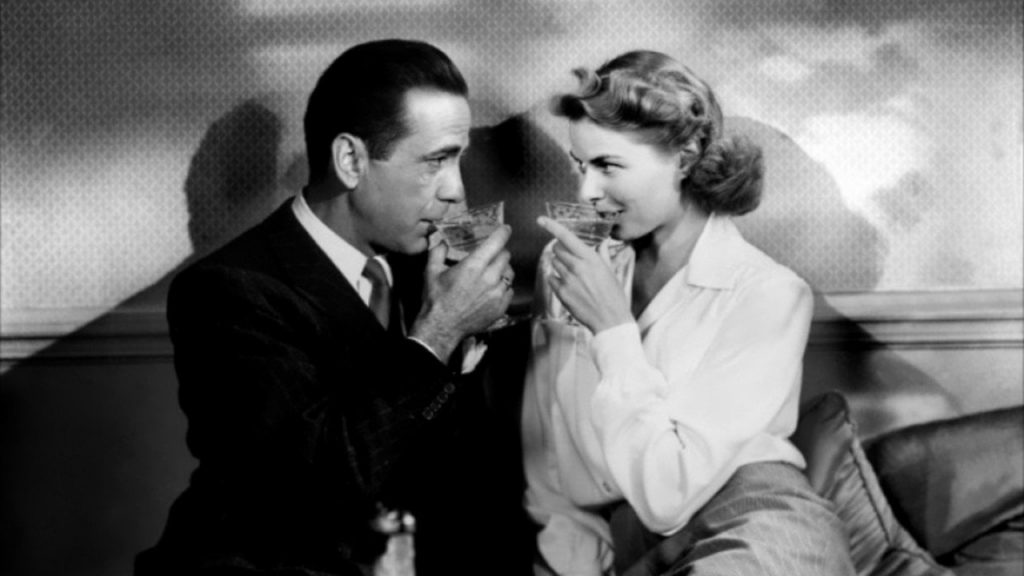Old doesn’t mean the hard hitting box office slams of the 2000s or the love stories to the tune of Norah Jones albums from the 90s. It means black and white, shadows looming on walls, female protagonists delicately and dramatically placing their hands to their foreheads, heroes that mesmerise with one glance, and romantic embraces that last just a fraction of a frame too long.
There’s a perceived over dramatisation of old films that is pawned off as superficiality. The realness of today’s blockbusters is impressive as well as exciting. The dexterity of plot lines and the complexity of characters is a testament to the progress not only of technology but of the creativity that goes into film making.
But there is something to be said about the romance of it all.
The first ‘old’ film I watched was Cat on a Hot Tin Roof. I fell in love. It probably has something to do with the fact that I will forever hold Tennessee William’s play, the source material of the film, in my heart as a sublime illustration of frustrated love and cruel tragedy. Classic piece of literature. We studied it in school and in desperate search of getting more of a feel for the movement of characters and timing, I watched the film. Fair enough, it’s not the same as the play. That’s a discussion for another time.
How could you not enjoy the film all the same? I mean who doesn’t love Paul Newman? Scratch that – how could you not be transfixed by Elizabeth Taylor? Not much happened, as Williams intended. Though it didn’t follow the spatial reality of the play, the movie did follow the dramatic unity of time where the duration of what happens onscreen is an accurate representation of the time that would pass in real life. You got a 2 hour glimpse of this seemingly easy life but you could smell the stench of a dying marriage bursting at the seems.
So it’s not that the plots were unsophisticated, twists like The Sting or Charade are known as the most surprising reveals in cinematic history. The audience is led through so many twists and turns to the point that it is unreal in its labyrinthine design. In all honesty, half-way through Cary Grant’s commendable performance, a character within characters, I was lost. But that’s what I love about old films. You get lost in them. It wasn’t about portraying realistic characters or situations that created empathy or relating to what was happening onscreen – which is laudable in the dramas that are produced now. It was about theatricality. It was escapism. You delve into a love story that spans over years, a con that has far too many angles.
There’s a style to these angles. Cinematography was a different practice back then. Frames consisting only of shadows slowly careening down stairs and wide lens to close up quick zooms were dramatic but necessary. Notorious creates chills not just because of Cary Grant and Ingrid Bergman’s heated dynamic but because of how the suspense and calculated rhythm add colour to the Hitchcock classic.
That’s partly why La La Land was so bloody incredible. You escaped into the glamour and glory of an old-style romance story set to original music with continuous cinemascope panoramic shots only to have your heart broken before you leave the cinema. Chazel reminded you of the whirlwind musicality of this romantic dimension and then managed to drag you back to reality by the ankles into the bittersweetness of the world we actually live in. The brutal end of the film is what makes it so phenomenal. It’s that same tinged sentiment you get when you genuinely realise that Ilsa is not going to stay with Rick or when Princess Ann can only smile sweetly at Joe Bradley from afar.
At the same time, you admire the characters for their literature-like rigidity. Anti-heroines, if there is such a term, emerge like Katharine Hepburn’s character Tracy Lord in The Philadelphia Story or Casablanca’s Ilsa Lund and even Scarlett O’Hara in Gone with the Wind . These icons had arrogance and poise and often verged on being pathetic. But the sickness of perfectionism that strings them together is what creates tension. It is their inability to accept human frailty that makes their coldness paradoxically alluring – statuesque. You adore them but you can’t love them, these elusive figures. There’s a distance between you and the characters in the way there isn’t in our generation’s films. You don’t connect with old films the same way you would if you went to the theatre today because you can’t really. You are a mere onlooker, the screen is your window into a similar but strange world. What the film industry has done over the years is to break the window and reach through to the audience’s own experiences and lives.
Sometimes there’s an art to staying behind the glass.




